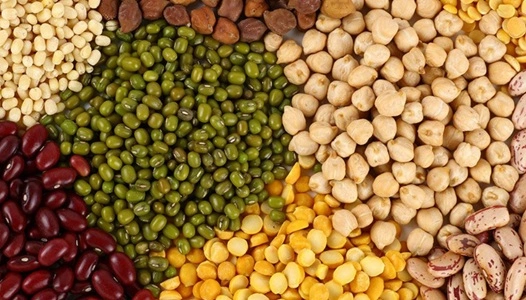Pulses are edible seeds of legume plants, and there are various varieties of them, including Moong, Urad, Gram, Lentil, and Tur. These pulses are rich in protein and nutrients, which makes them a perfect choice for every India. As India is the biggest country with a vegetarian population, pulses make sense in offering the required nutrition to the majority. As the demand for pulses is growing in the region due to nutrition and an affordable diet, the supply is also increasing with the modern cropping methods and involvement of Indian policymakers.
India is about to produce about 25-27 million metric tonnes of pulses in 2025, which shows an increase of 10% from last year. The country continues to be the world’s leader in both area and output for pulses, with targeted government support and new technology driving growth. The five states listed below are central to this success.

List of the top 5 largest pulses-producing states in India
The list is based on various aspects like type of pulse, projection based on last year’s numbers, current government records, India Data Map observations, and more. Various states play an important role in fulfilling overall demand, and the following are the top 5 states with the highest contribution. Let’s get started:
1. Madhya Pradesh
Madhya Pradesh, the undisputed champion in producing the highest pulses in the country, takes the first position with nearly 27 to 30% share in national output. Madhya Pradesh is expected to produce about 6.5 million metric tonnes this year, where the main crops are Gram, Tur, and Masoor. All thanks to the modern irrigation system, fertile soils, and special subsidies for pulse farming. Programs under the National Food Security Mission and local government initiatives supply high-yield seeds and technology. All this helps in increasing harvest, and the key player in this situation is the hard-working farmer who can now get a stable income and better access to the market.
2. Rajasthan
Rajasthan is the second-largest producer of pulses, known for its arid climate, which offers a perfect situation for drought-resistant pulses. The key pulses in this region are Moong, Moth Beans, and Gram. Output is expected to reach 4 MMT in 2025 with strong support from the government and local farming groups. Rajasthan’s focus on efficient water use, special crop clusters, and robust extension services helps farmers manage risk and boost productivity. These strategies have helped small farmers as well, and they are getting better prices with access to market, technology, and quality seeds.
3. Maharashtra
With an overall production of 3.5 to 4 million metric tonnes, Maharashtra takes the third spot in pulse production ranking. Tur or Pigeon pea is the major crop here, where the dominating regions are Amravati, Yuvatmal, and Nagpur. All this became possible through farmers harvesting 20 lakh hectares of land for pulse farming. Maharashtra mainly focuses on pigeon pea, but other widely grown varieties are Urad and Gram. The government is offering the Mahatma Phule Krishi Sanjivani Yojana, which promotes better farming practices, irrigation, and market access.
4. Uttar Pradesh
Uttar Pradesh has most of its land dedicated to farming, which makes it the fourth-largest pulse-producing state in India. The pulse production for 2025 from Uttar Pradesh is expected to be between 2.2 and 2.4 Million Metric Tonnes (MMT). The government is focusing on the production of Chickpea and Lentil varieties, where most farmers are using the crop rotation technique for better yield and improvement in soil health.
5. Karnataka
Karnataka holds the fifth position with a 1.8 to 2 million metric tonnes contribution in pulse production. Major pulses here include chickpea, pigeon pea, horse gram, black gram, and green gram. Karnataka’s climate allows for flexible planting seasons, which helps maintain a consistent pulse supply throughout the year. To encourage farmers to produce more crops, the government is offering schemes with better pricing and market access. Also, the policymakers are encouraging farmers to diversify and use sustainable farming practices to get higher yields.
Bottom Line
From Madhya Pradesh to Karnataka, the policymakers are working with farmers to encourage better production, improve soil health, and diversification. Many local-level programs are helping farmers get better pricing, meanwhile the demand is also helping farmers get a fair price for their crop.